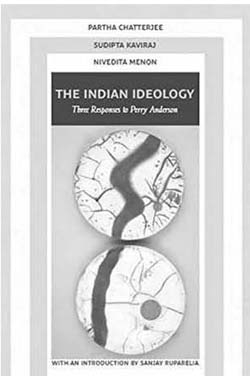Critique is essential to the healthy existence of a society. From its inception as an independent nation to its functioning for more than seven decades there have been many critiques of the dominant ideas that shape Indian society and its daily life. One of the most pervasive ideologies that Indian society is inflicted with is the ‘mahatma-ness’ of Gandhi and the dazzling statesmanship of Nehru. It is normally perpetrated through the medium of text-books and other state apparatuses upon the people’s life. It is not the purpose of this review to argue that Gandhi and Nehru were not great men but to show and acknowledge the existence of an ideological apparatus that profits from maintaining the projection of the extraordinary greatness of these personalities. This is the task that Perry Anderson attempts to undertake in his articles, which have been (later) converted into a book titled The Indian Ideology. This attempt has pleased some while hurting others particularly those who think of themselves to be the defenders of the Gandhi-Nehru heritage. Interestingly, the reaction does not come directly from those who are hurt but from their friends: a common strategy in academic cliques. Unfortunately, Anderson does not deal with the deeper nexus between the ideologues and their pseudo-enemies or friends.
In order to understand the responses to Anderson, it is imperative to spell out the key arguments articulated in The Indian Ideology. Firstly, the Indian polity has been declared as an almost successful democracy with some acknowledgement of the limitations by scholars such as Ramachandra Guha, Pratap Bhanu Mehta, Meghnad Desai, Amartya Sen and Sunil Khilnani. In other words, these reputed figures act as the high priests of the Indian ideology. Secondly, this is a result of the inherent inclusive and progressive attitudes of the Gandhi and Nehru. Third, the ‘Idea of India’ is a colonial construct (gift) later adopted by Indian radicals to fight for their freedom against British imperialism. Lastly, Indian democracy instead of working against caste (a deeply undemocratic element) works because of caste. There are other important arguments that Anderson offers but due to limitations of space we are not highlighting here but will be picked up when necessary in the succeeding part of the review.
In India, as in other international spaces, it is becoming increasingly difficult to develop a critique. Everything is reduced to polemics. Criticism against Islamic violence and conservatism is labelled as Islamophobia, criticism against Left politics is labelled as reactionary, against the Right it is called Communism. Criticism by white western scholars on Asia and its politics is called Orientalism. Critique of Dalits on the Brahmanical nature of Indian politics and processes is named cynicism and barbarity, critique of narrow identitarian nature of Dalit politics as Brahmanical. At the same time, what parades as critique is often an expression of prejudice against Dalits, Blacks, Women, Muslims, and other minorities. In order to avoid misunderstanding, it is expected from the critic to be an expert on the subject to such a high degree that it is humanly impossible to achieve it for everyone. One of the major problems the three responses in the book has is finding the criteria to deal with critiques on Indian society. All the three responses have a problem with the critique offered by Anderson.
Continue reading this review

